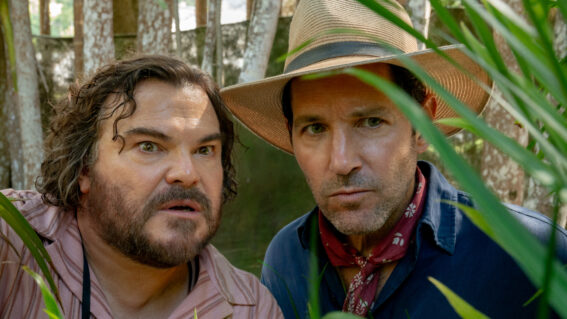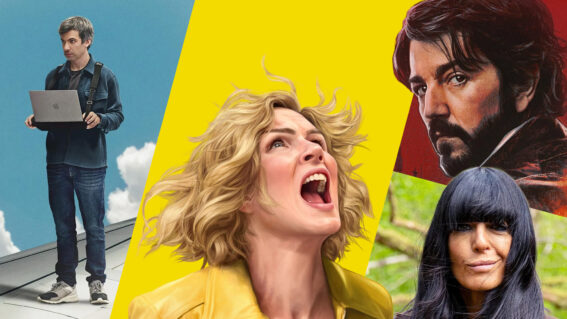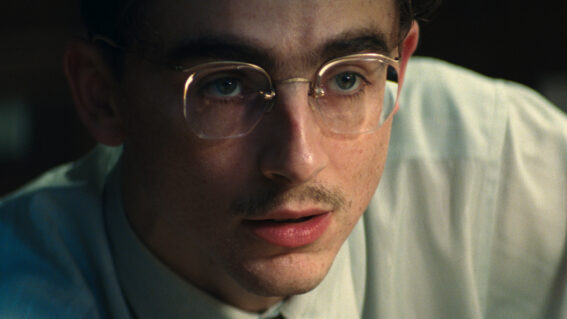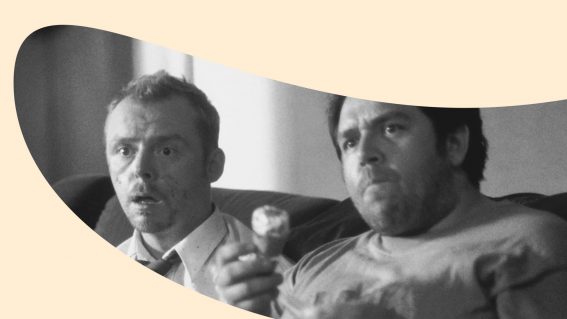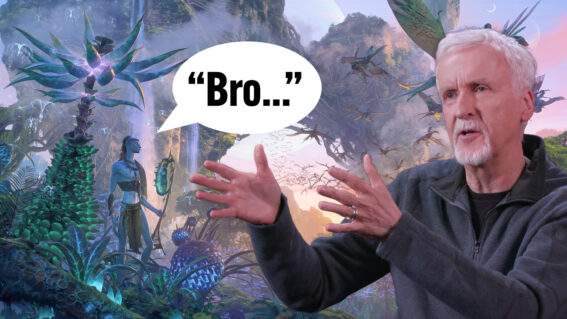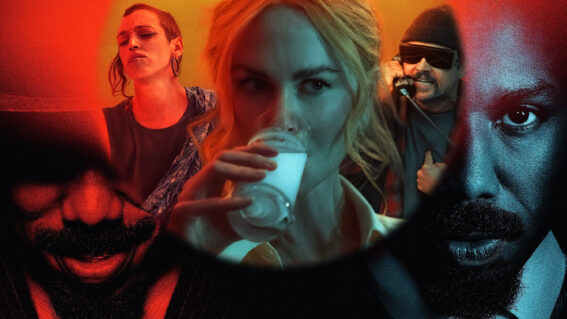Depp v Heard and the grisly spectacle of modern media
Netflix’s inevitably divisive series paints a damning portrait of social media discourse.
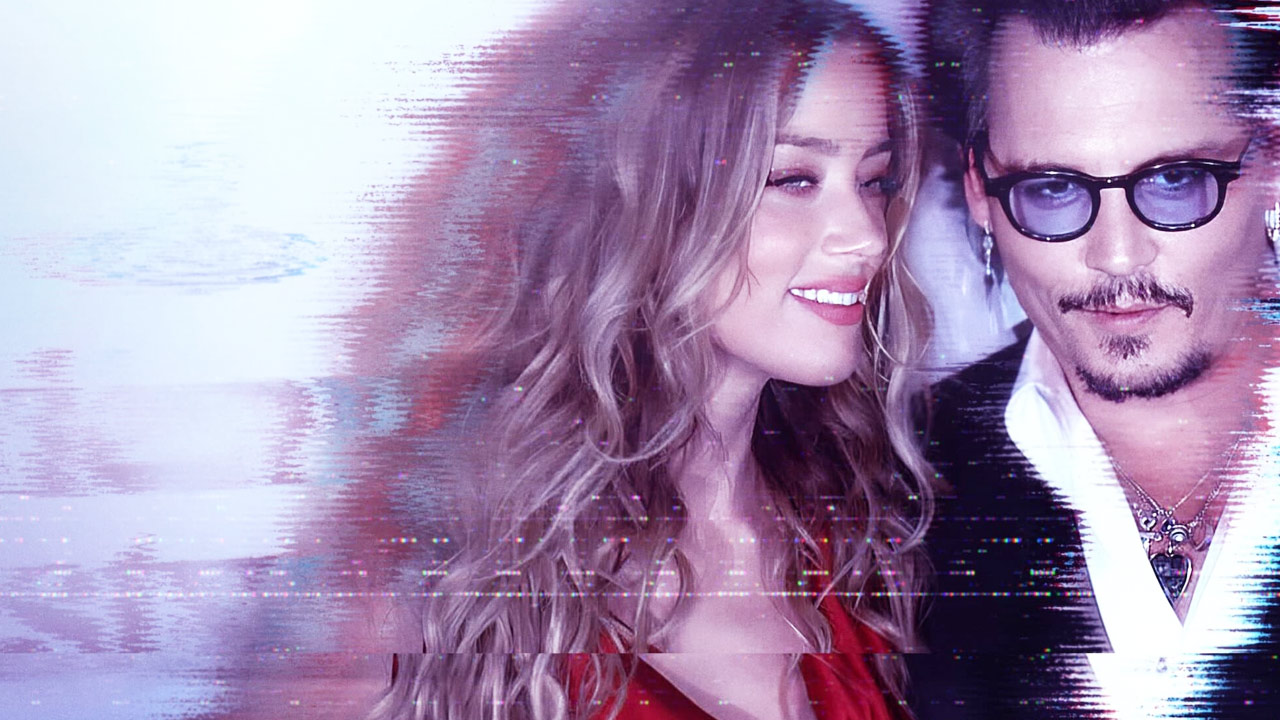
In addition to sordid courtroom details, a new Netflix series analyses the reactions of social media content creators during the Depp v Heard trial. A creepy men’s rights activist dressed in a Deadpool mask is just the tip of the iceberg, writes Luke Buckmaster.
It didn’t require an algorithm to predict that Netflix’s documentary series Depp v Heard would be hugely popular. The public love a celebrity courtroom drama, the more scandalous the better. Recounting the defamation case between Johnny Depp and Amber Heard, the former suing the latter—his ex-wife—for defamation, this is a show watched through the slits of your fingers. Loaded with lewd and icky details, working your way through it feels sleazily voyeuristic—like peeking into a neighbour’s bedroom with a pair of binoculars.
Director Emma Cooper works with two thick layers of grotesquery. One is the details of the trial, which was televised live to an audience of millions following the judge’s decision to allow cameras into the courtroom. The other is the reactions of online content creators—mostly from TikTok and YouTube—transforming it from a real world circus to a virtual one, picking at the carcass of the case, turning each scrap into spectacle.
The three-part series was always going to be divisive. However the integration of that second layer allows Cooper to distance herself (to some degree) from the material. She presents it as a work of arrangement, loosely in the Asif Kapadia style, i.e. no voice of god narrator and no staged interviews, feeding an illusion that the story is telling itself. This structural decision also lets Cooper have her cake and eat it too: rehashing all the gory details while hinting that her show is actually about something else, something bigger.
The American media’s unquenchable appetite for sensation goes back a long way. One of Hollywood’s earliest and biggest scandals centered around silent film comedian Fatty Arbuckle, charged in 1921 with the rape and manslaugher of actress Virginia Rappe, who was badly injured at a party held by Arbuckle and died four days later. Coverage of Arbuckle’s three trials (the first two resulting in hung juries, the third acquittal) demonstrated the media’s lecherous tendency to milk tragedy for readers and ratings. On one day alone, as recounted by this New Yorker longread, Randall Hearst’s newspaper the San Francisco Examiner “ran seventeen stories about the scandal,” which provided “a harbinger of the twenty-four-hour gossip industry.”
Back then there was no television and certainly no TikTok. The Depp versus Heard case has been compared, in terms of viewership and resonance in the zeitgeist, to O.J. Simpson’s 1995 murder trial, which was also televised. As in the Arbuckle affair, the audience’s role in Simpson’s trial was passive—eyes glued to the screen, hands turning the page. With the Depp versus Heard trial arriving in the era of social media, the audience are now content creators.

The ability for ordinary folk to challenge the hegemony of mainstream media outlets, for so long the indomitably powerful gatekeepers, is no small deal. It was the dream of ham radio operators, community TV broadcasters, early desktop publishing enthusiasts. A utopian ideal underpinning the dawn of the internet. But it was also the dream of street preachers, cranks and crazies: people addicted to the sound of their own voices. When we see a men’s rights activist appear in Depp v Heard, dressed in a Deadpool mask, recapping courtroom events from the perspective of the “true” victims of society (people who look and sound like him), well, geez. The words “careful what you wish for” come to mind.
This guy (I won’t name him, because he’s already gleaned too much attention) has produced several videos in the last few weeks, spanning various topics, most receiving less than 4000 views. For the sake of comparison: some of his videos targeting Amber Heard, during the thick of the trial, amassed millions. In Billy Wilder’s great 1951 film Ace in the Hole, Kirk Douglas’ carpetbagging journalist—desperate to break a big story—reveals his diehard approach—and willingness to craft something out of nothing—when he says: “I can handle big news and little news. And if there’s no news, I’ll go out and bite a dog.”
Journalists and commentators no longer need to bite that dog. Local news has collapsed. Ninety nine percent of news we read today is regurgitated, not broken. The content creators featured in Depp v Heard understand the path to success, or at least popularity, isn’t getting the scoop or producing at volume. It’s tapping into preconceived biases. That Deadpool guy—and many other content creators featured in the series—didn’t assess the facts then make their minds up. They went in and shaped the material to fit their worldview, viewing everything through one prism, one colour.
Did society become more partisan because we all became content creators? Or was this a historical coincidence? What’s the value of a liberated, citizen-led media landscape, if the content is fuelled by biases and preconceptions? And how can it not be, given the way humans work?
A sludge of questions oozed through my mind as Depp v Heard came to a close. The jubilation of #JusticeForJohnny supporters, cheering at their perceived victory, contrasted the sickness rising from my gut. When it comes to the future of social and mainstream media, I can’t see any way out of it, any path forward that doesn’t suck. I don’t think anyone can. The bright cyber lights that shone above the Arab Spring, suggesting an optimistic future for social media, went dark long ago, dimmed by disinformation, misinformation, harassment, bots, broken promises, bad algorithms. A messy world only seems to get messier.







